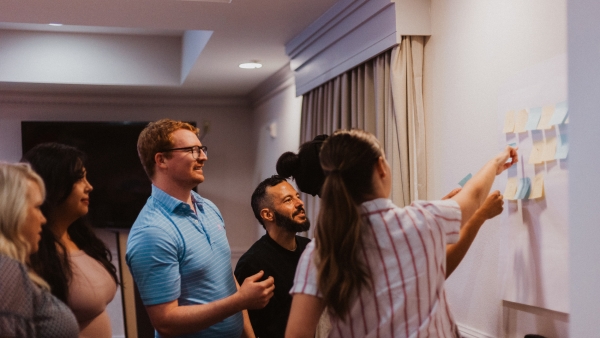In recent years, diversity, equity, and inclusion (DEI) have transcended being mere buzzwords. They've become integral to how organizations operate, especially in sectors like leisure and hospitality, where interactions and experiences for ourselves and visitors are the world we live, manage, and work in daily.
However, with the growing emphasis on DEI, a new buzzword has emerged: DEI fatigue.
It’s essential for DEI practitioners in the leisure and hospitality sector to recognize DEI fatigue, understand where it comes from, and take proactive steps to prevent it. As someone entrenched in the hospitality industry for years, I've witnessed and experienced this firsthand. To help you navigate this journey, our team has compiled a list of five best practices that will keep the DEI conversation alive and ensure it thrives in your organization.
The History of DEI Fatigue
The term "DEI fatigue" dates back to the 1990s, and was coined after the Civil Rights Act was signed in 1991. This Act prohibited organizations from discriminating based on race, gender, religion, color, or ethnic characteristics. At the time, people were confused by their organization's attempts to diversify and many felt the pressure and stress of "diversity quotas." Today, DEI fatigue is a concept marked by exhaustion, skepticism, and resistance that often rears its head as individuals and organizations wrestle with the intricacies of DEI. It's not uncommon to see enthusiastic support for DEI initiatives dwindle as people become overwhelmed or disheartened by the challenges that come with implementation.
Five Actionable Strategies That We've Found Effective
Clearly Define DEI Goals: Start with achievable DEI objectives tailored to your organization. Goals, like conducting cultural assessments, implementing DEI education, enhancing workforce diversity, or making services more inclusive, act as a compass on your DEI journey. Break goals into one per quarter so that you or your organization are not overwhelmed. After each quarter, take a moment to reflect on the progress made and the challenges faced. Celebrate the victories, no matter how small, and learn from the setbacks.
Develop a Feedback Loop: Create an internal communication strategy that welcomes feedback on DEI initiatives. Creating these loops builds psychological safety, trust, and understanding. As your team gives feedback and starts to share their experiences and concerns, make it a point to actively listen and address them. DEI is an evolving process. Regular feedback, assessments, and adjustments to your initiatives are crucial to keeping them relevant and effective, and new ideas and perspectives can help reignite your DEI efforts.
Ongoing Training and Education: Take time to learn what your team understands, what they don't, and what they're most excited to learn about. Use that feedback to develop an internal education series to help break down biases and foster a more inclusive environment. As a DEI practitioner, I offer regular training sessions for employees to build awareness and understanding. For employees, seek ongoing education and self-improvement opportunities to keep the momentum going. Regular training sessions can significantly elevate compassion and empathy among employees.
Promote Inclusive Leadership and Collaboration: Burnout is a genuine concern for DEI practitioners, so to encourage mental and emotional well-being, promote leaders who embody DEI principles and can set a powerful example for your entire organization. Inclusive leadership shapes organizational culture, and those leaders can partner with other leaders inside and outside the organization to provide resources and support systems for individuals to maintain their enthusiasm. Joining forces with other industry players and experts can provide you additional people to lean on when you feel overwhelmed or underwhelmed and can invigorate your DEI efforts and reinforce your commitment to DEI.
Embrace It: DEI fatigue is not a dead end; it's a call to reassess, reinvigorate, and evolve current initiatives and strategies. Understand that even the most committed individuals and organizations can experience a sense of weariness along this journey. This is normal, and it's a signal to pause and reflect. Humanize the current process, take breaks, and find ways to reengage in new, exciting activities that create meaningful impact and experiences, but still hit all the marks on your overall DEI strategy.
***Bonus Tip: Focus on What You Can Impact: Diving into the world of DEI politics and pop culture can be like stepping into a maze. Sure, understanding the societal shifts is important, but let's be real—it's easy to get burned out in the process. Instead of getting caught up in the latest trends, let's refocus on what really matters: the unique needs of the people within your organization. Ditch the need to keep up with legislation or the latest billionaire conversation. It's all about finding that sweet spot between being in the know and taking meaningful action.
So, while DEI fatigue is a real challenge, it's not insurmountable. Adopting these five strategies will help keep DEI conversations vibrant and productive.
If your organization is grappling with DEI fatigue, don't go it alone! Our DEI Team is here to help guide you through this complex journey and help you facilitate conversations and programs that drive engagement and personal growth. Let's collaborate to foster a more inclusive world, one step at a time, in one of the world's most diverse and exciting industries.






